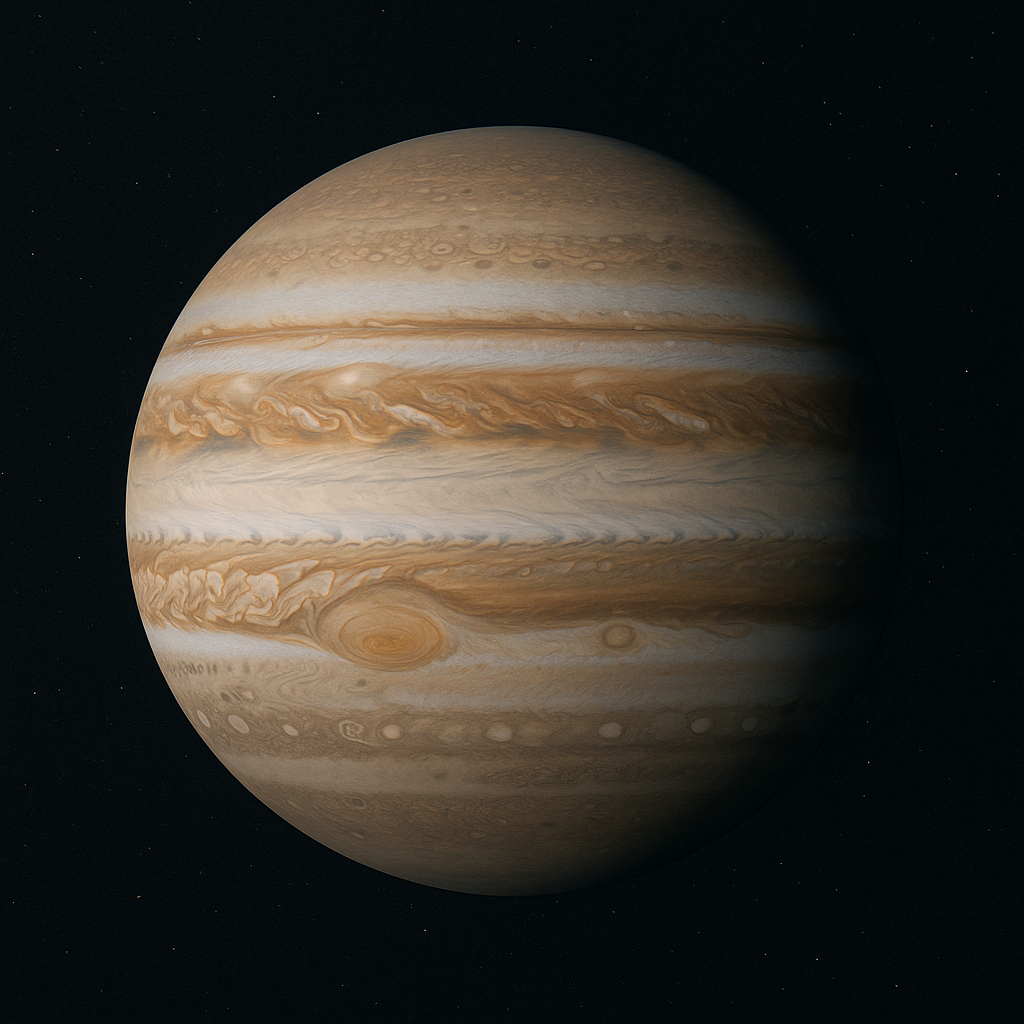General Visibility
- Jupiter returns to the morning sky after sunrise from late July onward, making it accessible through fall and winter mornings.
- In September, Jupiter rises after midnight and stays visible until dawn.
- During late December (26–31), Jupiter shines brilliantly at around magnitude –2.7, making it one of the sky’s brightest objects. September Highlights Rise Times & Location
- Early September: Jupiter rises around 3:00 AM, slightly east‑northeast.
- Late September: Jupiter rises earlier, near 1:30 AM.
- It shines in the constellation Gemini, near the stars Pollux and Castor.
Celestial Events - September 9: Jupiter positioned about 7.9° to the right of Pollux before sunrise.
- September 12–19: A rare morning gathering with Venus, the Moon, Regulus, plus Jupiter and Saturn.
Jupiter’s Moon Events - September 7: Callisto reappears from behind Jupiter (03:46 UT).
- September 14: Ganymede casts a shadow on Jupiter (10:25–13:36 UT).
- September 15: Callisto shadow transit (01:30–04:13 UT).
- September 25: Ganymede eclipse by Jupiter’s shadow (04:08 UT).
- September 27: Double shadow transit (Io and Europa) occurs 04:54–05:41 UT.
- Night of Sept 28–29: Io’s and Ganymede’s shadows cross Jupiter’s disc (starting 23:26 UT).
Tip: Even modest binoculars (e.g., 7×50 mm) let you spot the Galilean moons; a telescope reveals even more exciting detail.
October & November
- Jupiter continues to dominate the pre‑dawn eastern sky, gradually rising even earlier.
- By late November, viewing conditions improve as the planet climbs higher before twilight.
December Overview - Jupiter shines dazzlingly from Dec 26–31 as the brightest object during pre‑dawn hours.
- The planet continues rising earlier each night, dominating the Gemini region of the sky.
Summary Table
| Month | When to Look | What to See |
| September | ~1:30–3 AM | Jupiter near Pollux & Castor; moon-planet gatherings; several Galilean moon events |
| October/November | Pre-dawn | Jupiter rising earlier and higher in Gemini |
| December | Before dawn | Jupiter at its brightest (mag –2.7), ideal for telescopic or naked-eye viewing |
Observation Tips
• Timing: Best viewing is roughly 1–2 hours before sunrise.
• Equipment: Binoculars can easily capture Jupiter’s moons; a telescope will let you observe their transits and shadows.
• Tools: Use planetarium apps or WinJUPOS to track moon events and plan nightly observations.
• Watch the horizon: Seek out Jupiter’s position relative to Gemini and rising bright objects like Venus and Saturn for easy orientation.


Whats up! I just wish to give an enormous thumbs up for the great data you have here on this post. I might be coming back to your blog for more soon.